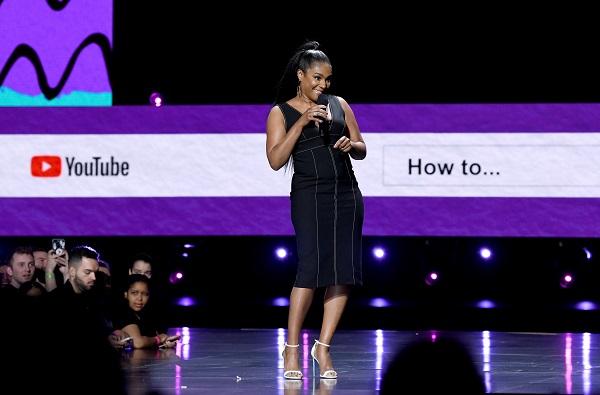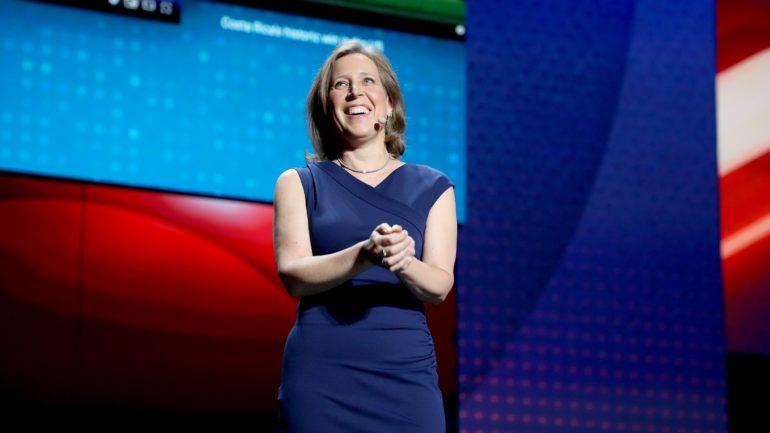YouTube Now Has 2 Billion Monthly Users, Who Watch 250 Million Hours on TV Screens Daily
By Todd Spangler
LOS ANGELES (Variety.com) – Has become the new center of gravity for primetime? That’s the narrative it wants Madison Avenue to believe — especially as it relates to coveted younger demos.
The Google-owned video behemoth now counts 2 billion monthly unique users globally, YouTube CEO Susan Wojcicki announced at Thursday’s Brandcast marketing event in NYC. That’s up around 5% from its previously reported 1.9 billion monthly logged-in users last summer.
More interestingly, YouTube continues to rapidly boost its living-room footprint. Watch time of YouTube on TV screens was more than 250 million hours per day as of March 2019, according to the company. That’s an increase of 39% in less than a year — and, notably, it excludes viewing on YouTube TV, Google’s internet pay-TV service.
A few caveats: It’s self-reported data, based on YouTube’s internal data based on 90-day average of watch time for devices including smart TVs, Roku, Apple TV and game consoles. According to YouTube, the majority of total watch time (over 70%) comes from mobile devices.
Still, YouTube’s momentum in the living room is a key part of its case to advertisers and agencies about why they should divert spending from traditional TV to YouTube.
Across all platforms, YouTube reaches more U.S. consumers 18-49 in an average week than all cable TV networks combined, Allan Thygesen, Google’s president of the Americas, told the Brandcast crowd. YouTube has previously engaged in chest-thumping about its reach relative to TV — in fact, Thygesen was actually citing research Google commissioned a year ago from Nielsen for the stat.
On TV screens specifically, YouTube’s Google Preferred ads (representing inventory from the top 5% most popular channels) drove a lift in ad recall of 112% and an average increase in purchase intent of 53%, according to Thygesen. That’s according to a Google/MediaScience survey among 2,000 U.S. adults from November 2018-January 2019.
And YouTube wants to expand the bucket of content watched on TVs that it makes available to advertisers. The company announced that it is updating the Google Preferred proprietary algorithm (P-score) to include more content that is frequently watched on TV screens and “content that exhibits higher production value.”
Independent research supports YouTube’s claim that it’s a big player on TVs. Netflix is actually the top-preferred platform for video viewing on TV screens, with YouTube coming in second among consumers 18-34, per a Cowen & Co. survey in February. But — and this is a critical point for YouTube’s ad business — Netflix doesn’t carry any advertising. And the research indicates that YouTube beats not just basic cable but broadcast networks as the preferred source for entertainment on TVs among millennials.
Adding more fuel to YouTube’s premium-ad play: It’s going to make all its original scripted and unscripted programming, including series “Cobra Kai,” “Liza On Demand,” and “Impulse,” available for free, ad-supported viewing starting later this year in post-SVOD windows. In other words, while YouTube execs apparently still see some value of originals driving YouTube Premium subscriptions, it has no designs on becoming anything like a Netflix or Disney+ (and, correspondingly, has whacked down its scripted slate to a handful of top programs ).
In an additional pitch to ad buyers, Google said ’s 70 broadcast and cable channels are now available as a standalone option in Google Preferred (before, YouTube TV inventory was available only as part of a larger Google Preferred buy).
Wojcicki said the driving force behind YouTube’s growth is its personalized viewing paradigm, in contrast to the programmed lineups of TV nets: “Primetime is now personal,” she said Thursday. She cited a study YouTube conducted with Omnicom that find “passion” about a creator or topic is three times more important to a YouTube users “than whether or not there’s a big Hollywood name attached.”
That said, YouTube is spending plenty of time and money cultivating celeb-driven content.
On Thursday, it teased a “top-secret” project with Justin Bieber coming next year, along with documentaries on Paris Hilton and Latin artist Maluma and a renewal of Kevin Hart’s unscripted “What the Fit.” Alicia Keys appeared on the Brandcast stage at Radio City Music Hall to tout YouTube’s power to let her tell her own “narrative” and announced she has a new talk show coming to her channel, called “Unwind,” featuring chats with friends and musicians. Also at the event, comedian Tiffany Haddish said she plans to launch her own channel, including a show in which she stages interventions for celebrity hoarders (though “it will be more of a home-invasion situation”).
| Tiffany Haddish at YouTube Brandcast 2019. Credit: FilmMagic for YouTube |
Brandcast also featured performances by several popular artists — underscoring that music is the No. 1 content category on YouTube — including Dua Lipa, Daddy Yankee, Grace VanderWaal and Lele Pons.
All the booster talk and razzle-dazzle came amid the backdrop of YouTube’s ongoing “brand safety” problems, which remain a concern for advertisers. These have included a “pedophile ring” of YouTube users , revealed earlier this year, in which child predators left sexually coded comments on YouTube videos with kids. The ensuing bad press led big advertisers to pull advertising, and YouTube decided the crisis was a big enough fire that it disabled the ability to leave comments on nearly all channels featuring minors .
Google has tried to minimize the issue of hateful and violent videos (and other objectionable content) on YouTube. In a letter to the House Committee on Homeland Security released Thursday , the company said it typically removes 7 million-9 million YouTube videos per quarter, which is “a fraction of a percent of YouTube’s total views during this time period.” YouTube also said it spends hundreds of millions of dollars per year identifying and removing removing content that violates its guidelines, with a 10,000-employee team of content reviewers.
In her remarks to ad execs Thursday, Wojcicki only briefly addressed YouTube’s ongoing efforts to make it as clean and well-lighted as possible.
“Let me be very clear: Living up to our responsibility is my No. 1 priority,” she said, claiming YouTube is making “significant progress” on this front. Of course, despite similar vows she’s made in the past , YouTube has continued to find itself at the center of controversies.
Pictured above: YouTube CEO



